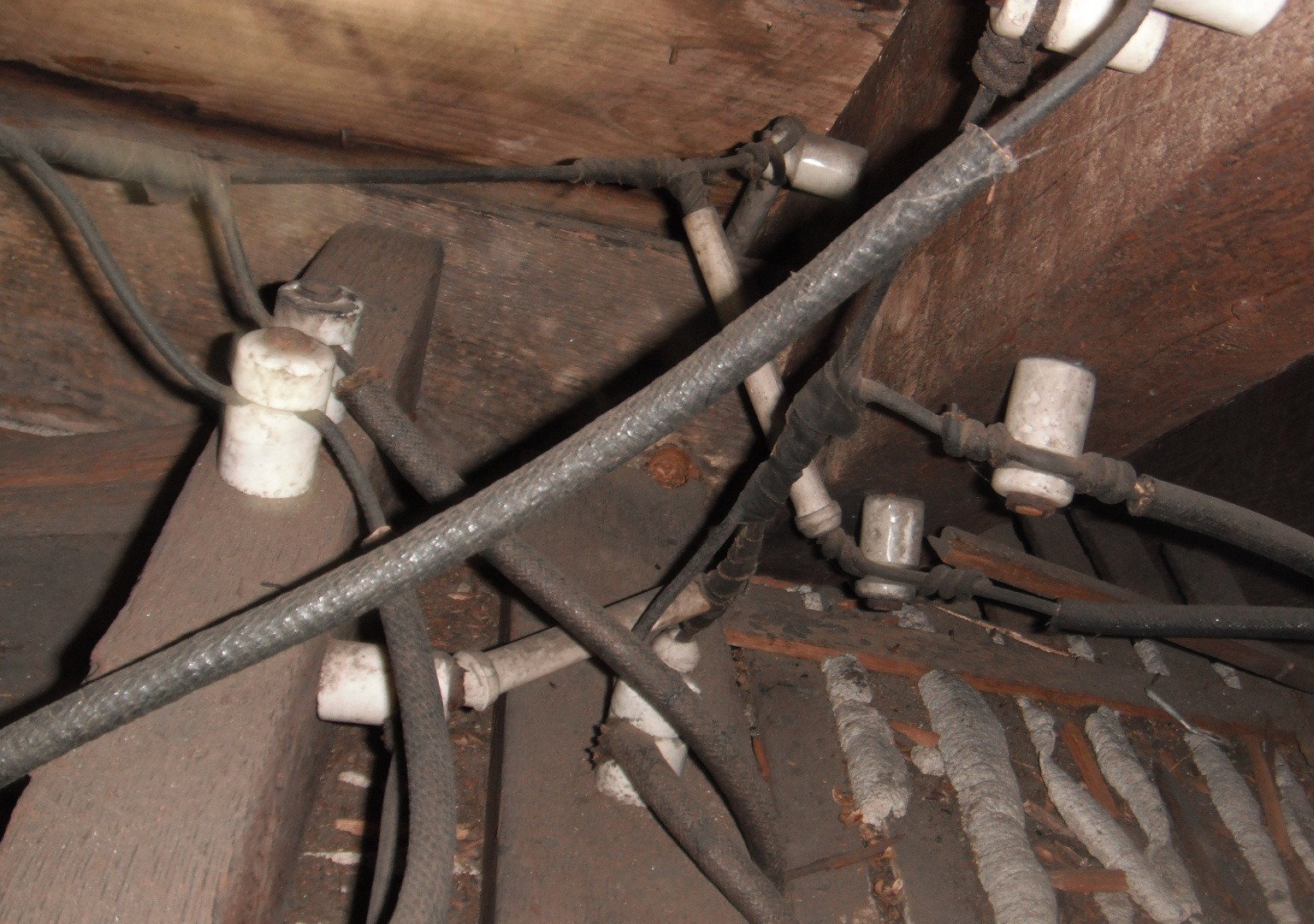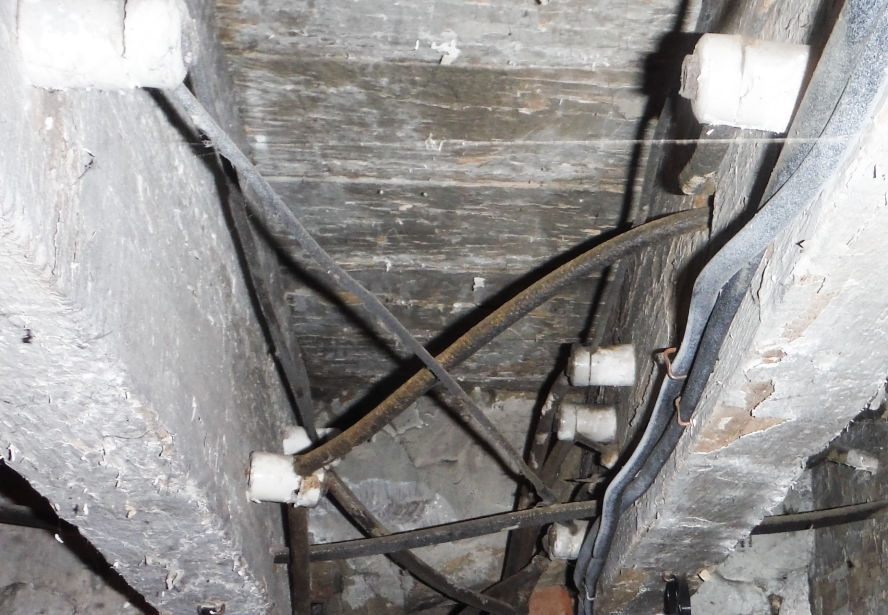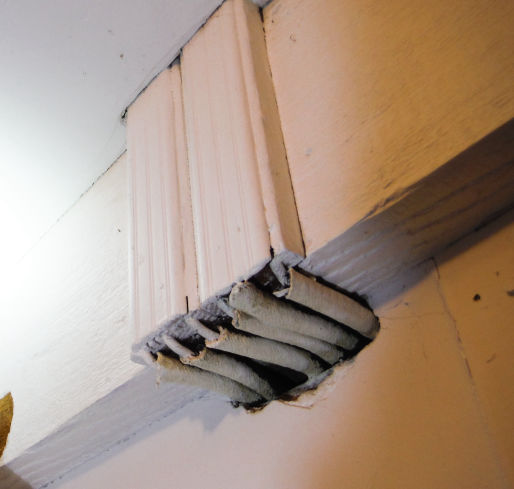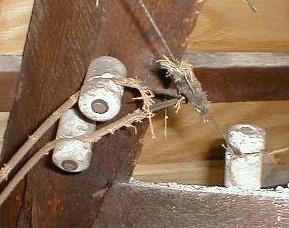

Knob and Tube Wiring
When installed correctly knob and tube wiring was, in some ways, superior to current wiring practices.
Unfortunately, this outdated type of electrical wiring system is rarely intact after 80 or so years of use. Things that happen well after the original installation can be a major safety concern.

Fairly common in houses built before 1930, the system uses porcelain insulators (knobs) for running wires through unobstructed spaces. Porcelain tubes protect wires that run through studs and joists. The porcelain knobs suspend the wire in open air to dissipate heat. The wiring was usually installed along the center of joists and studs away from potential nail punctures. Additional protection is provided by porcelain tubes where it passes through wood.
The hot and neutral wires are always separated by at least 3 inches except near a connection to a fixture, where an additional protective woven sleeve was used from the last knob. Splices were joined by wrapping one wire around another and then soldering the joint. Knobs were then placed within 6 inches of the splices to prevent stress on the connection. Wires were usually never loose or placed on top of joists where they could be easily damaged.


Improper alterations
Improper alterations are the most consistent problem I find with knob and tube wiring, and they pose a significant safety hazard. Unfortunately from a safety standpoint, the electrical system is one of the few things in a home that can be installed completely wrong and still
Additional branches improperly added to the original wiring is one of the common problems I see. When additional branches or fixtures are added, the fuses protecting the old circuits are likely to blow frequently. Installing larger fuses is an easy, but unsafe, solution. Oversized fuses allow much more current to flow than originally intended, resulting in'''''' mnn additional heat in the ''conductors. This heat causes the insulation protecting the wire to become brittle, and eventually to disintegrate.
Heat and critters
Heat directly above ceiling lights and in un-vented attics can also degrade the wire insulation. Some types of insulation used on knob and tube wiring seem to be a delicacy for the critters that find their way into old homes. They can make short work of the insulation covering the wires.
Thermal insulation problems
Faced with drafty houses and high heating bills, homeowners often add thermal insulation to their attics and walls. Insulation on top of knob and tube wiring is a major fire hazard.
Remember the first good point of knob and tube wiring? The wire suspended in open air allows heat to dissipate. Loose and rolled insulation counteracts the original open air installation of knob and tube wiring.

In 1987, the National Electric Code prohibited the placement of insulation in contact with this type wiring. Later, a couple of west coast states permitted insulation provided the wiring was "certified" by a licensed electrician, foil or paper backed batt insulation was not used and warning signs were placed where the old wiring is concealed by the insulation.
Finally, there seems to be a growing concern about this old wiring from the homeowners insurance companies. I have found one that will not write a policy if there is more than a certain percentage of knob and tube wiring still in use and several will not offer coverage unless it is all replaced.

Bill Kibbel is a consultant and an inspector of historic homes
& commercial buildings at Heritage Building Inspections.
Sin
This web page was created with Mobirise